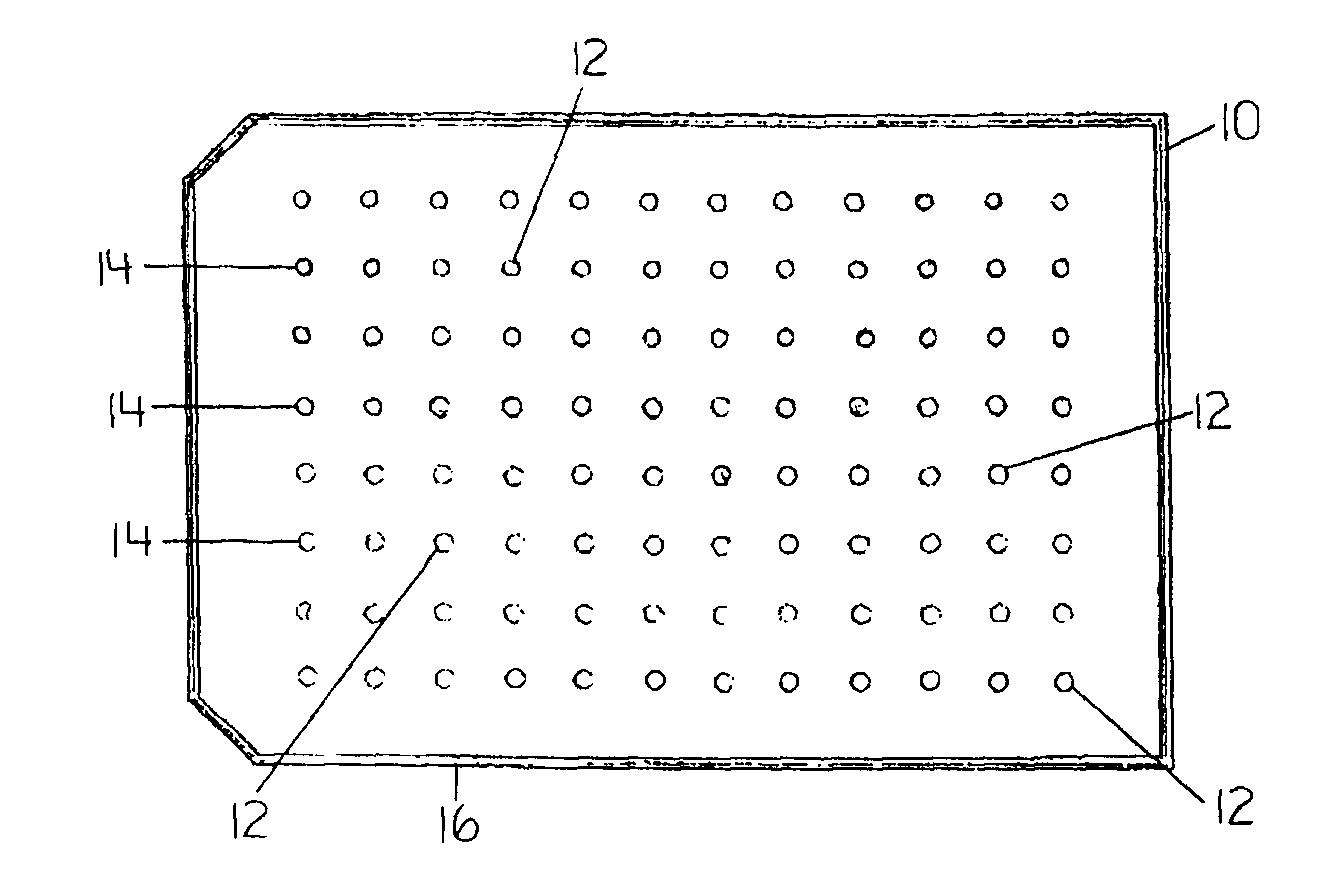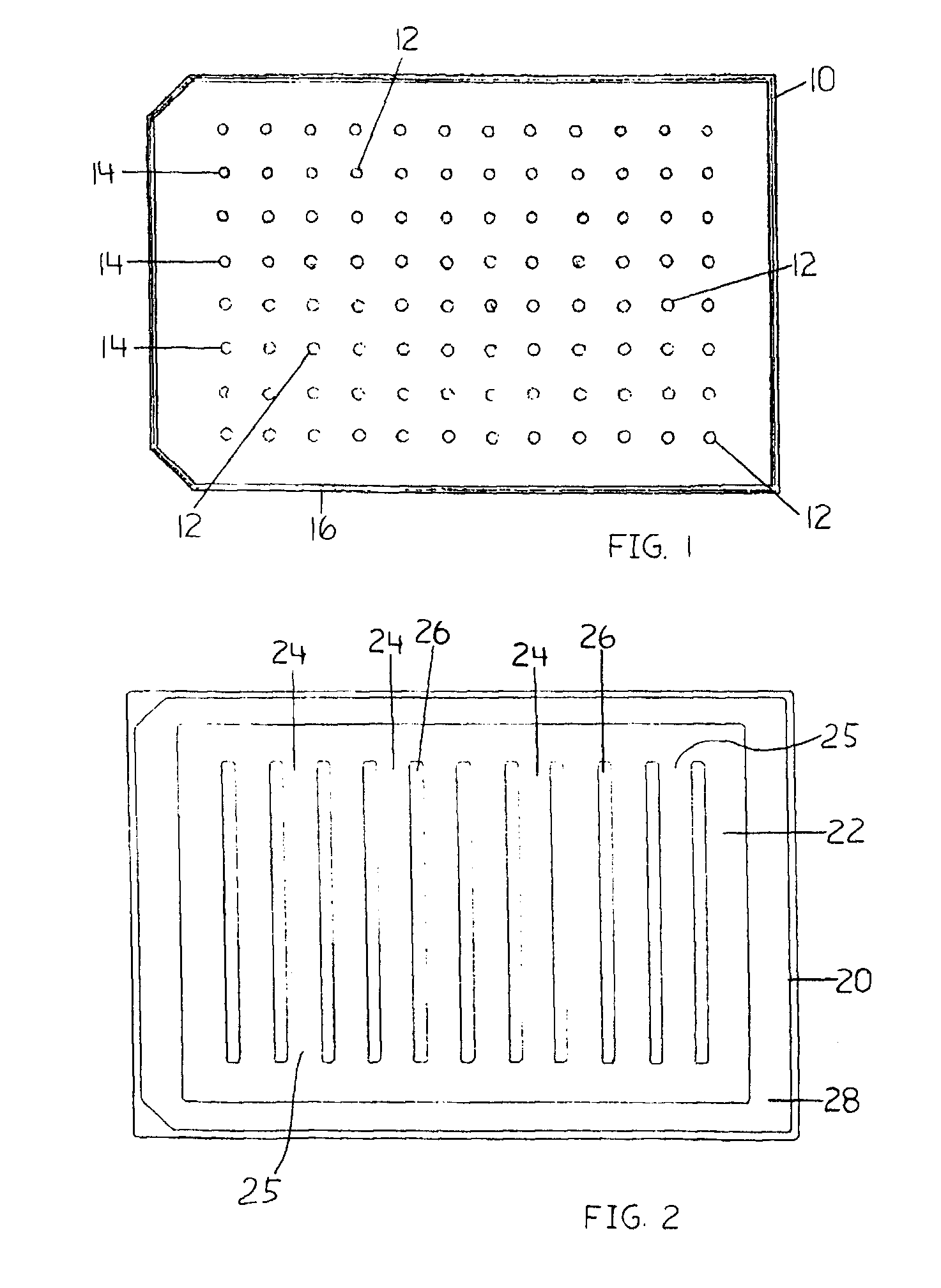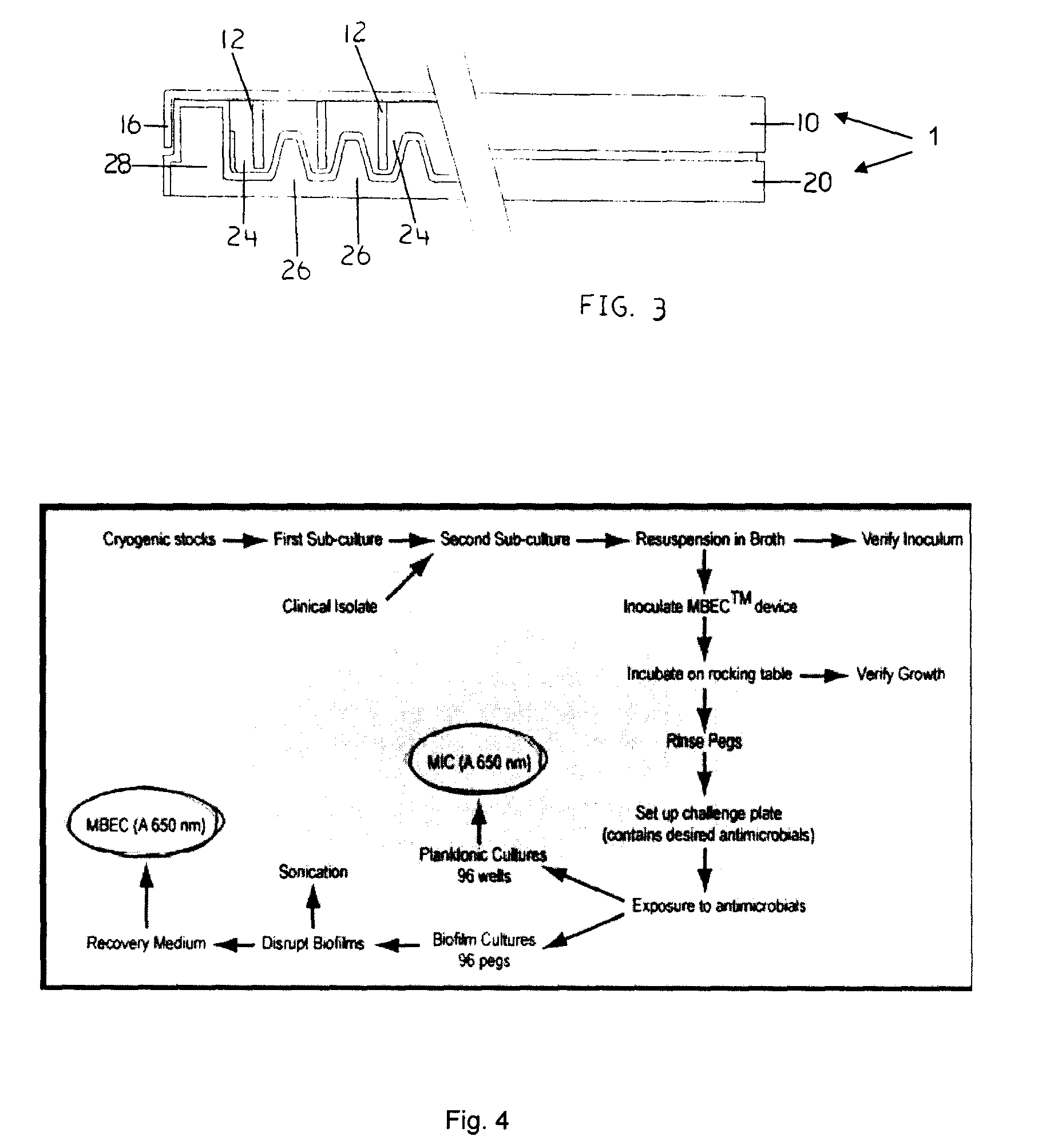Devices and Methods for the Selection of Agents with Efficacy Against Biofilm
a biofilm and agent technology, applied in the field of biofilm agents with efficacy, can solve the problems of biofilm formation, inability to respond to antibiotic treatment of staph, and potential inaccurate conclusions, so as to improve the understanding and application of process conditions, enhance biofilm growth, and improve the effect of efficiency and cost-effectiveness
- Summary
- Abstract
- Description
- Claims
- Application Information
AI Technical Summary
Benefits of technology
Problems solved by technology
Method used
Image
Examples
example 1
Step 1—Growing Sub-Cultures of the Desired Microorganism
[0095]1. If using a cryogenic stock (at −70° C.), streak out a first sub-culture of the desired bacterial or fungal strain on an appropriate agar plate. Incubate at the optimum growth temperature of the microorganism for an appropriate period of time. For most bacterial strains, the first sub-culture may be wrapped with Parafilm™ and stored at 4° C. for up to 14 days.
2. Check the first sub-culture for purity (ie. only a single colony morphology should be present on the plate).
3. From the first sub-culture or from a clinical isolate, streak out a second sub-culture on an appropriate agar plate. Incubate at the optimum growth temperature of the microorganism for an appropriate period of time. The second sub-culture should be used within 24 h starting from the time it was first removed from incubation.
4. Verify the purity of the second sub-culture.
[0096]It is not recommended to grow subcultures on media containing selective agents...
example 2
Step 3—Set Up the Antimicrobial Challenge Plate
[0110]The following section describes how to set up a serial two-fold dilution gradient of a single antimicrobial in the challenge plate. This is only one example. The antimicrobial challenge plate may be set up in any manner desired with any combination of antimicrobials. It is important that the final volume in each well of the challenge plate is 200 μl. This is to ensure complete submersion of the biofilm in the antimicrobial.
[0111]1. Get a brand new, sterile 96-well microtiter plate and open in it in the laminar flow hood.
[0112]2. Setup a working solution of the desired antimicrobial in the appropriate growth medium. Do not dilute the antimicrobial by more than 20% (i.e., no more than 1 part stock antimicrobial solution per 4 parts of growth medium). The working solution of the antimicrobial should be made at a concentration equal to the highest concentration to be tested in the challenge plate.
[0113]3. Add 200 μl of growth medium t...
example 3
Determine MBEC Values
[0170]To determine the minimum biofilm eradication concentration (MBEC) values, check for turbidity (visually) in the wells of the recovery plate. Alternatively, use a microtiter plate reader to obtain optical density measurements at 650 nm (OD650). Clear wells (OD650<0.1) are evidence of biofilm eradication.
PUM
 Login to View More
Login to View More Abstract
Description
Claims
Application Information
 Login to View More
Login to View More - R&D
- Intellectual Property
- Life Sciences
- Materials
- Tech Scout
- Unparalleled Data Quality
- Higher Quality Content
- 60% Fewer Hallucinations
Browse by: Latest US Patents, China's latest patents, Technical Efficacy Thesaurus, Application Domain, Technology Topic, Popular Technical Reports.
© 2025 PatSnap. All rights reserved.Legal|Privacy policy|Modern Slavery Act Transparency Statement|Sitemap|About US| Contact US: help@patsnap.com



